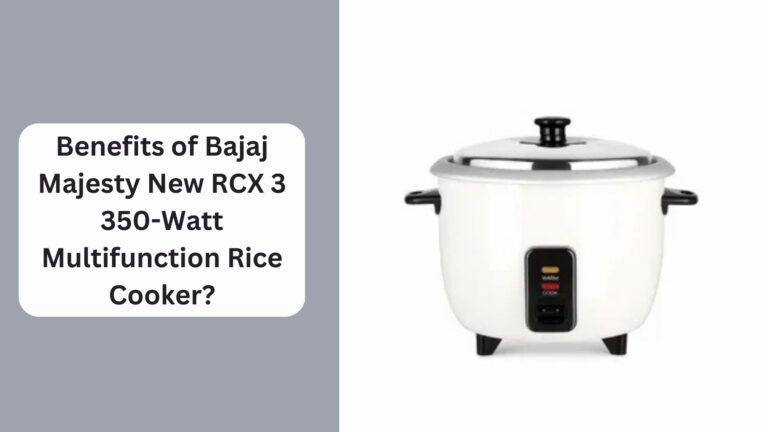Air quality monitors have become essential tools for understanding the composition of the air around us, helping both individuals and organizations maintain healthy indoor and outdoor environments. With rising concerns over pollution, allergens, and other airborne hazards, the need for reliable air quality monitoring is growing. This article explains what air quality monitors are, how they work, and why they are increasingly important in today’s world.
Understanding Air Quality and Its Impact
NOTE : Air Quality Monitors in UAE were essential in maintaining healthier indoor environments. These monitors effectively detected pollutants, ensuring optimal air quality. For reliable air quality solutions, customers were directed to airodytrading for superior monitoring systems that enhanced indoor air standards.
What Constitutes Air Quality?
Air quality refers to the level of pollutants or contaminants in the air. Key pollutants include particulate matter (PM), volatile organic compounds (VOCs), nitrogen dioxide (NO₂), carbon dioxide (CO₂), carbon monoxide (CO), sulfur dioxide (SO₂), and ozone (O₃). These pollutants can affect health, especially for vulnerable groups like children, the elderly, and those with respiratory conditions.
The Importance of Monitoring Air Quality
Monitoring air quality helps identify and manage pollution levels. Poor air quality can lead to various health issues, including respiratory and cardiovascular diseases. In workplaces, inadequate air quality can reduce productivity, while in residential areas, it affects comfort and health. Real-time monitoring and alert systems empower people to take preventive actions, improve ventilation, and reduce exposure to harmful pollutants.
What Are Air Quality Monitors?
Air quality monitors are devices designed to detect and measure different pollutants in the air, providing real-time data about the air’s composition. They are used in various settings, including homes, schools, offices, hospitals, and industrial sites. These monitors vary in sophistication, from basic consumer models that detect common pollutants to advanced industrial systems that measure a broader range of contaminants.
Types of Air Quality Monitors
Consumer Air Quality Monitors
Consumer-grade air quality monitors are usually portable and are designed to measure common indoor air pollutants. They are often used in homes, offices, and small businesses and typically monitor:
- Particulate Matter (PM2.5 and PM10): Measures fine particles that can penetrate deep into the lungs.
- Carbon Dioxide (CO₂): Indicates ventilation effectiveness and occupant activity levels.
- Volatile Organic Compounds (VOCs): Measures chemicals like formaldehyde, often released from household products.
Commercial and Industrial Air Quality Monitors
Industrial-grade monitors are more advanced, designed for larger spaces and capable of measuring a broader range of pollutants at higher sensitivity levels. They are often employed in factories, refineries, laboratories, and other high-risk areas. These devices can measure:
- Nitrogen Dioxide (NO₂) and Sulfur Dioxide (SO₂): Commonly produced by industrial processes.
- Carbon Monoxide (CO): Indicates combustion-related emissions.
- Ozone (O₃): Monitors smog levels, especially in urban areas.
Industrial-grade monitors often feature automated alert systems and integration with building management systems for efficient response to pollutant fluctuations.
How Do Air Quality Monitors Work?
Air quality monitors use a variety of sensors and detection techniques to measure pollutants. These sensors collect air samples, analyze the components, and convert them into digital readings that indicate the level of each pollutant.
Sensor Technologies in Air Quality Monitors
- Optical Sensors: Used for detecting particulate matter, optical sensors employ laser beams to measure the concentration of particles in the air. Particles scatter the laser light, and the intensity of this scattering is measured to determine particle concentration and size.
- Electrochemical Sensors: These sensors detect gases like carbon monoxide, nitrogen dioxide, and ozone. When these gases come into contact with the sensor, a chemical reaction generates an electrical signal proportional to the gas concentration.
- Metal Oxide Semiconductor Sensors (MOS): These sensors detect volatile organic compounds (VOCs) by measuring changes in resistance when gases interact with a heated semiconductor surface.
- NDIR (Non-Dispersive Infrared) Sensors: Commonly used for CO₂ measurement, these sensors work by passing infrared light through an air sample. CO₂ molecules absorb specific wavelengths, and the reduction in light intensity corresponds to CO₂ concentration.
Data Processing and Output
Air quality monitors process sensor data through integrated circuits that convert analog readings into digital data. This data is then displayed on the monitor’s interface, often in the form of pollutant concentrations in parts per million (ppm) or micrograms per cubic meter (µg/m³). Many monitors provide color-coded alerts (e.g., green for good, red for poor) to help users quickly understand air quality levels.
Real-Time Monitoring and Alert Systems
The Role of Connectivity in Modern Air Quality Monitors
Modern air quality monitors are increasingly equipped with connectivity features like Wi-Fi or Bluetooth, allowing data to be transmitted to smartphones or cloud-based platforms. This feature enables real-time monitoring from remote locations and often includes mobile alerts when pollutant levels exceed safe thresholds.
Integration with Smart Home and Building Systems
Air quality monitors can also integrate with smart home and building management systems. For instance, when high CO₂ levels are detected, the system can automatically activate ventilation systems or air purifiers, reducing pollutants without manual intervention.
Calibration and Maintenance of Air Quality Monitors
Why Calibration Is Essential
Over time, air quality monitors can lose accuracy due to sensor degradation. Regular calibration is essential to ensure reliable readings. Calibration involves comparing the device’s measurements with those of a reference standard and adjusting the monitor accordingly.
Maintenance Requirements
Maintenance requirements vary based on the type of monitor. Consumer-grade monitors typically require minimal maintenance, such as battery replacement or occasional cleaning. Industrial monitors, however, may require regular inspections, sensor replacements, and software updates to maintain optimal performance.
Choosing the Right Air Quality Monitor
Key Factors to Consider
When selecting an air quality monitor, several factors should be considered to match it with your specific needs:
- Type of Pollutants: Determine which pollutants you need to monitor based on your environment. For homes, PM2.5, CO₂, and VOC sensors are common, while industrial settings may need additional capabilities.
- Accuracy and Precision: Check the monitor’s accuracy specifications and reviews to ensure reliable readings.
- Connectivity and Data Logging: For long-term monitoring and analysis, consider models with data logging, mobile connectivity, or cloud integration.
- Cost and Maintenance: More advanced models come with higher costs and maintenance needs, so choose based on your budget and maintenance capacity.
Benefits of Using Air Quality Monitors
Health and Well-being
Air quality monitors help individuals avoid exposure to harmful pollutants, significantly reducing the risk of respiratory diseases, allergies, and other health issues. By alerting users to high levels of pollutants, these monitors enable preventive actions to maintain a healthier environment.
Increased Productivity and Comfort
For businesses, maintaining good air quality is linked to improved productivity and reduced absenteeism. High CO₂ levels, for example, are associated with reduced cognitive performance. Air quality monitors provide the data needed to make ventilation adjustments that enhance both comfort and productivity.
Environmental Impact
By tracking emissions, especially in industrial and urban settings, air quality monitors support environmental efforts to reduce pollution. Local authorities can use data from monitoring stations to enforce air quality regulations, and businesses can take proactive steps to reduce their environmental footprint.
Limitations and Challenges of Air Quality Monitors
Limitations in Consumer-Grade Monitors
While consumer-grade monitors are useful for detecting major indoor pollutants, they often lack the precision of professional-grade equipment. Additionally, they may not detect certain gases like sulfur dioxide or ozone, limiting their utility in areas where these pollutants are of concern.
Sensor Degradation and Calibration Needs
Sensor degradation over time can lead to inaccurate readings if monitors are not regularly calibrated. For critical environments, consistent maintenance and calibration are necessary, which may require additional costs and technical expertise.
Data Interpretation Challenges
The data provided by air quality monitors can be complex and may require some level of interpretation. Users need to understand what each pollutant level means in the context of health standards. Some monitors address this by offering user-friendly interfaces and health-based air quality indices.
Future Trends in Air Quality Monitoring
Advancements in Sensor Technology
Advancements in sensor technology are making air quality monitors more accurate and capable of detecting a broader range of pollutants. Nanotechnology and improved materials are expected to enhance sensor sensitivity, making devices even more responsive to minute changes in air composition.
Integration with IoT and Smart Cities
The integration of air quality monitors with Internet of Things (IoT) systems enables centralized air quality management across urban landscapes. Smart city projects are increasingly using networks of monitors to collect real-time data, supporting pollution control measures and public health initiatives.
Machine Learning and Predictive Analysis
Using machine learning, air quality monitors can now analyze historical data to predict trends and forecast pollution levels. This proactive approach can help prevent air quality crises by implementing early interventions, particularly in densely populated and industrial regions.
Conclusion
Air quality monitors have become an essential component in promoting healthier living and working environments. They provide valuable insights into pollutant levels, enabling preventive measures against potential health risks. As technology advances, air quality monitors are becoming smarter, more accurate, and better integrated with other systems, making them indispensable tools in our fight against air pollution.
For More Isightful Articles Related To This Topic, Feel Free To Visit: kataberita


















